A reckoning of a nation’s democracy, identity, and hope. One woman’s leadership quest (Hendrika Mayora Kelan) unites broken voices, uncovering forgotten queer histories, and fighting against patriarchy for the true Nusantara spirit
In the heart of Indonesia’s vast archipelago, a profound transformation is unfolding, challenging deep-seated norms and redefining the nation’s commitment to its foundational motto, “Bhinneka Tunggal Ika”—Unity in Diversity. At the forefront of this movement stands Hendrika Mayora Victoria, Indonesia’s pioneering transgender politician and queer activist. Her journey, emblematic of resilience and hope, is the focal point of the forthcoming documentary, The Emerald’s Touch.
This compelling film is the brainchild of filmmakers Alfred Pek and Melissa Green, whose collaborative vision seeks to illuminate the narratives of marginalized communities within Indonesia. Through Hendrika’s leadership quest, the documentary delves into the challenges faced by LGBTQ+ Indonesians, particularly lesbian and queer women, amidst a backdrop of systemic patriarchy and societal discrimination. Guided by Dutch sociologist Saskia Wieringa, renowned for her efforts in decolonizing queer women’s histories across the archipelago, Hendrika’s story emerges as a beacon of hope against the tides of homophobia and democratic erosion.
In this Q&A session, we have the privilege of engaging with Alfred Pek and Melissa Green to explore their motivations, the intricacies of documenting such a poignant narrative, and their aspirations for The Emerald’s Touch. Their insights promise to shed light on the transformative power of storytelling in advocating for equality and social justice.
What drew you both to tell the story of Hendrika Mayora Victoria and how did The Emerald’s Touch come to life?
Alfred: I have a personal connection to Indonesia, being originally from there before becoming an Australian. My identity as an Indonesian diaspora is a complex one. I belong to neither here nor there, not in terms of connection to the language or culture, but rather the reality of day-to-day life and being acutely aware of the social class divisions and diversity between cultures, religions, and now sexuality. My family and I left for Australia for a better future, but the guilt and realisation of my privilege have led me to want to help those who are still in the country and realise the potential of Indonesian people on the global stage. Indonesians are an amazing people full of hope and tenacity, which is severely glossed over. As I was previously a video journalist, I used my connections through word of mouth and the internet, which led me to discover the amazing story of Hendrika Mayora Kelan. Her amazing Charisma, strength, life story, and dedication to helping others are living proof of this, and it is time for the world to see and hear the story of how she bridges many differences and overcomes everything against all odds in the world’s most invisible large nation
Melissa: Before this project, I had no real connection to Indonesia beyond occasionally reading articles about influencers making fools of themselves there. My understanding of the country was surface-level at best. It was Alfred who opened my eyes to Indonesia’s incredibly complex LGBT history and the resilience of its queer community. When he introduced me to Bunda, I was struck by her intelligence, strength, and unwavering spirit. She is, in every sense, a warrior. As a Jewish lesbian living in Canada, where I am free to be myself, I felt a deep sense of Tzedakah the religious obligation to do what is right. I knew I had a responsibility to bring awareness to this issue and to use my voice to stand for what is just.
What were the biggest creative and logistical challenges you faced while making this documentary?
We believe that the scale, the connections, and the scope of this project are quite ambitious. We wanted to keep it simple, which is a story of triumph and spreading hope and joy to unite a broken community. But this is anything but simple. Especially when queer existence, history, and truth are at stake. We overcame the logistical challenges through Alfred’s insight into Indonesia, his previous filmmaking experience there, his expertise in knowing locations and prices, and his ability to build relationships with people who are also excellent relationship makers like Hendrika Mayora Kelan.
Creatively, through our research in the natural and urban landscapes, as well as the cultural nuances and the state of current and past affairs. We sought to have the best information, knowledge, and representation. We wanted to maintain the authenticity of the voice and the story while providing a holistic and balanced outlook that will allow us to provide a richer visual and storytelling dimension for LGBTIQ Indonesians like never before.
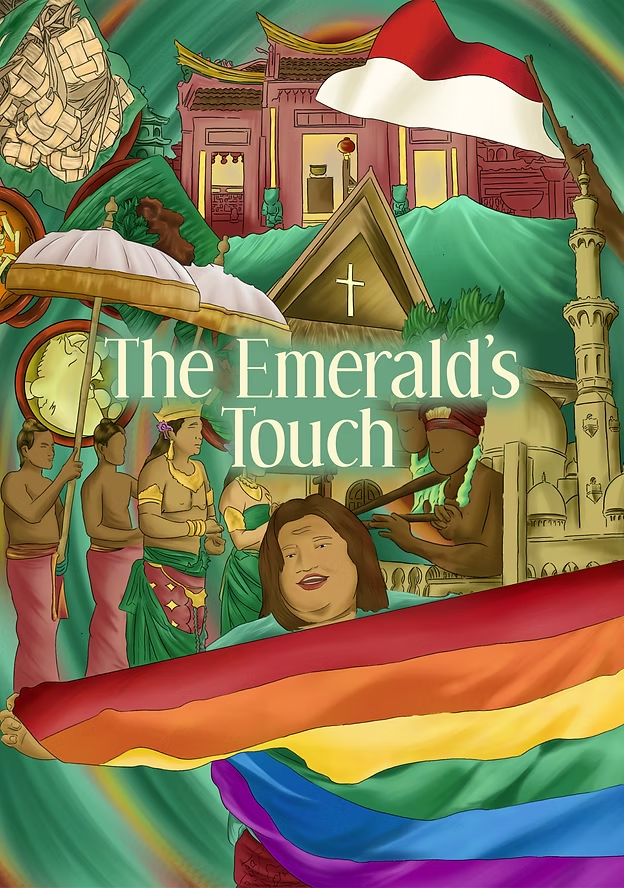
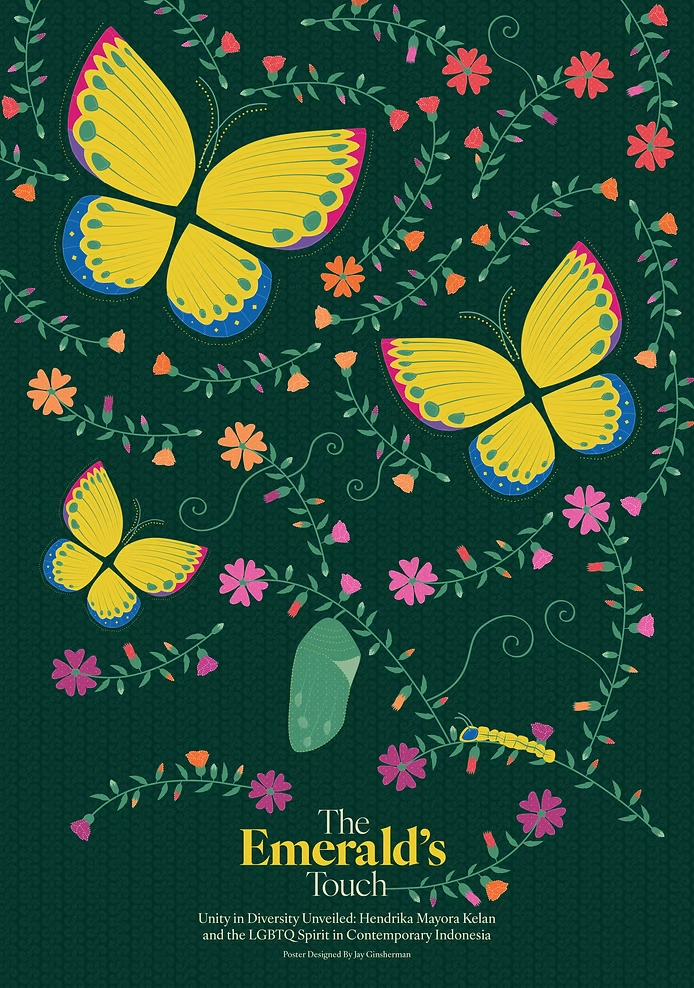
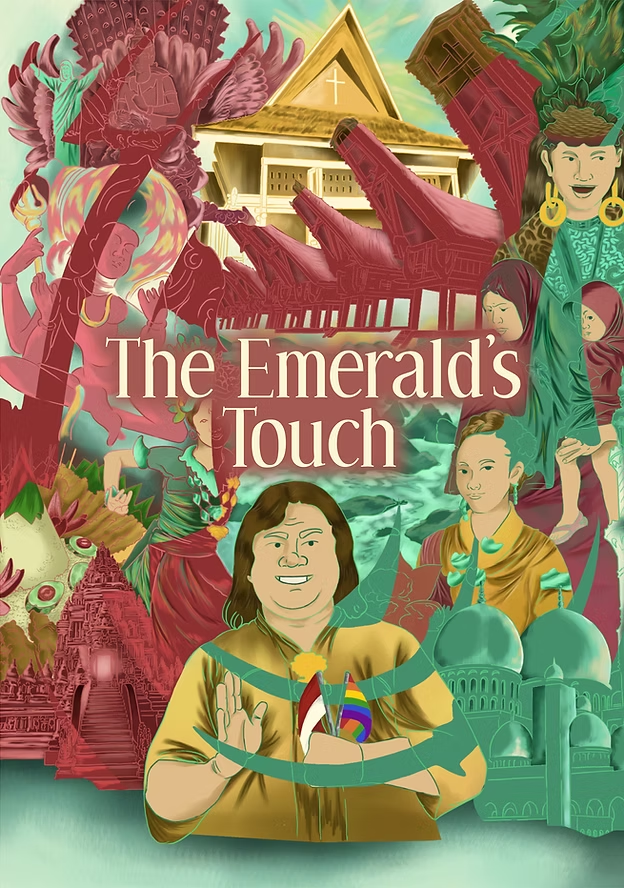
How did you approach filming such a politically and socially sensitive subject, especially given the risks involved?
Our approach to making this film, given the sensitive nature and the risks associated, is through genuine relationship-building and constant consultation with the communities and sources. Being mindful of our steps and risks is key to ensuring everyone’s safety and enhancing the quality of the story and its authenticity. Alfred’s insights and filmmaking experience in the country, as well as the organisation and coordination of Melissa’s production expertise, ensure a strong safety net and structures in place for when production occurs.
How do you balance storytelling with activism in your filmmaking process?
Successful activism is a product of artful storytelling, and compelling storytelling in itself becomes a huge impetus for activism. These two things are heavily intertwined, given the nature of the topic and the context sources we have. Deep listening to the accounts, emotions, journeys, and triumphs will be the essence required to balance these two.
This all comes back to how we communicate our intentions to our sources and listen to their advice and guidance to ensure the most compelling elements can be shined through, including showcasing the beauty of the various landscapes and people that the world deserves to find out more about
The documentary touches on democracy, identity, and systemic patriarchy in Indonesia. What do you hope audiences—both local and global—take away from this film?
Indonesia is a metaphor for the rest of the world and serves as a great place and inspiration for various social revolutions and the dynamism of a changing economy and society within the 21st century.
We aim to shine a light on the complex struggles faced by LGBTQ Indonesians, who continue to endure profound discrimination within a society shaped by deeply rooted homophobia, transphobia, and patriarchal norms. Despite Indonesia’s global image as a vibrant and diverse tourist destination, the stark reality for its queer community is one of marginalisation and persecution.
Our mission is not only to expose these injustices but also to celebrate the resilience and bravery of Queer Women activists, who are on the front lines of the fight for equality, but also to empower them!
Support The Emerald’s Touch
https://www.indiegogo.com/
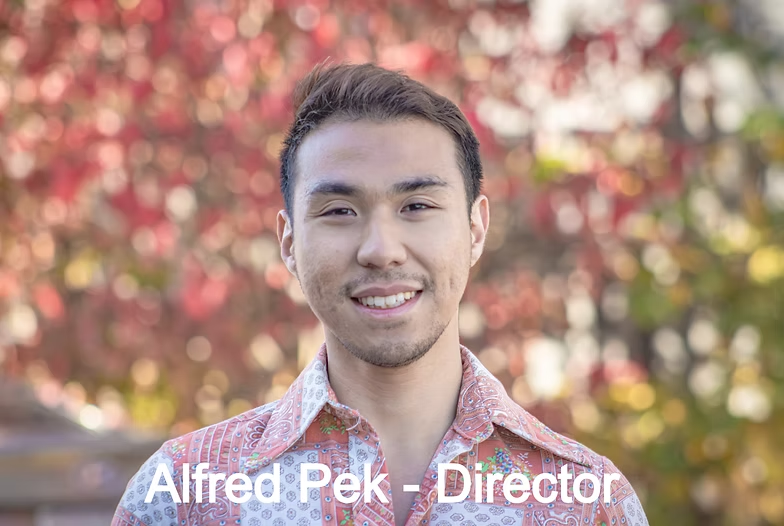
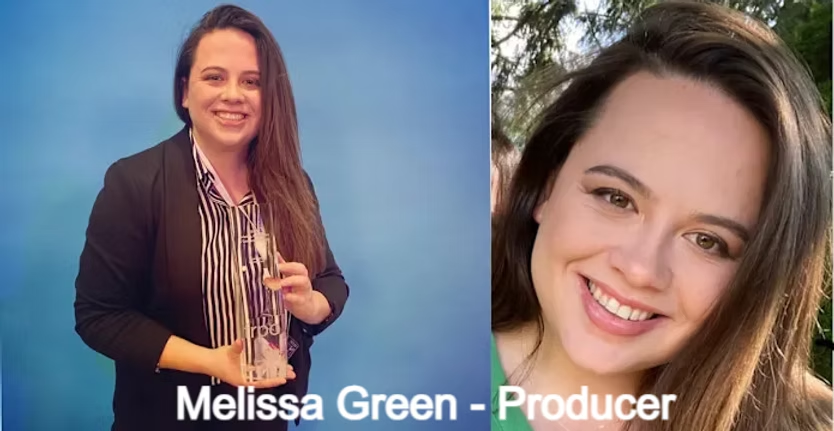
How does the film explore the intersectionality of gender, sexuality, and political representation in Indonesia?
We plan to interview various sources that would encapsulate the breadth of representation we’d highlight. Hendrika Mayora alone represents a lot of intersections in all these 3 categories, being Indonesia’s very first Trans public official ever and is a Catholic and a (black) Melanesian minority in a country where the majority of public officials are Muslim, Javanese, and cisgender heterosexual men.
Our sources will cover the voice of the various women (allies and queer) who are fighting for Indonesia’s acceptance and defending the rights of the LGBTIQ community within the religious, activism efforts, and legal work. Furthermore, we also strive to showcase the surviving voices and traditional queer cultural practitioners to challenge cultural amnesia and highlight decolonisation efforts that this film seeks to achieve retribution to save the true identity of this nation.
What does Hendrika’s story reveal about the broader struggles and resilience of LGBTQ+ Indonesians?
The LGBTIQ community in Indonesia constantly faces a barrage of institutional, economic, social, cultural, and religious challenges. The impact of religious discrimination, as well as rigid patriarchal views in a lot of cultures. Many do not have the means to break through the cycle that made them entrapped in lower socioeconomic status, abhorrent mental health, and psychological issues or, at the very least, the social status of the nation. Yet, the story of Hendrika Mayora will serve as an inspiration for many in the region.
Hendrika’s story alone is about battling the various life tribulations her predicament has bestowed upon her. THE tale of a young and highly charismatic individual who is born into a lower-class family growing up in Papua, the outskirts of Indonesia. She was poised to be a respected high-ranking Catholic Priest in (Yogyakarta) Central Java. After many years in denial, she comes out as a woman and is forced into sex work while living on the streets, struggling to find formal employment and be recognised legally for who she is. To this day, her national ID still recognised her as a male.
She had fallen from the upper echelon of prestige and grace in a powerful institution to the bottom rung of Indonesian society. Eventually, her tenacity, diligence, and infectious charm allowed her to foster trust, good rapport, and faith as a respected LGBTIQ activist and teacher in Java, to then become an elected village leader in her home region who is a rising star politician in her terms, though located in one of Indonesia’s poorest regions. These ups and downs of life are a common challenge for everyone in the country as a whole, but she is the first in the country to EVER break through the political and civic engagement space.
How do you see The Emerald’s Touch contributing to ongoing discussions about queer rights in Southeast Asia?
South East Asia alone is a more diverse region than the Americas put together. Especially in the divide of ideology, religions, and political systems. While Thailand has achieved full marriage equality and civic rights for its LGBTIQ population, homosexuality is punishable by life imprisonment or capital punishment in Brunei, with everyone else in between. The diversity within Indonesia itself is a microcosm of the region. As the largest country in Southeast Asia in terms of area, population, economy, and culture. Given the scale of Indonesia as a country, it’s more akin to a global metaphor. If the world’s 3rd largest democracy and the largest Muslim nation can have an opportunity for a national reckoning. The implications are far beyond South East Asia, rather for the entire world
The film is guided by Saskia Wieringa, who has played a key role in documenting queer women’s history in Indonesia. How did her insights shape the narrative?
Saskia Wieringa is one of the foremost experts on Indonesia’s queer subcultures. While no one understands these communities better than those who live within them, Saskia’s deep research and firsthand knowledge provided us with invaluable insight, shaping the very foundation of our documentary. Furthermore, her Dutch identity and her decolonisation efforts have made her a figure of irony in the archipelago that was once ruled by the Netherlands.
Her expertise didn’t just guide us, it transformed our approach. She helped us craft a compelling narrative structure, ensuring that the film tells a coherent, meaningful story rather than a scattered collection of voices. Without her insights, we would have struggled to weave these histories into a powerful arc.
Beyond shaping the structure, Saskia also pointed us toward key individuals whose experiences best represent the resilience and struggles of Indonesia’s queer, lesbian, and trans communities. Her decades of work laid the groundwork for Emerald’s Touch, making it a tribute not only to those fighting for their rights today but also to the hidden histories she has spent her life uncovering.
Did you work/are you working with any local activists, historians, or policymakers while making this film? If so, how did their perspectives influence your storytelling?
Yes, we are currently working almost exclusively with local activists, historians, and policymakers. This decision has profoundly shaped our storytelling, ensuring that Emerald’s Touch is not just an external observation of Indonesia’s LGBTQ+ movement but a documentary rooted in the lived experiences of those fighting on the frontlines.
One of our main subjects, Bunda Mayora, is both a dedicated activist and Indonesia’s first trans politician. Her leadership and advocacy provide an essential perspective on the political and social struggles of the LGBTQ+ community. We are also working closely with Dr. Darwita Hasiani Purba, a theologian who not only supports LGBTQ+ rights but also bridges the complex intersection of Christianity and Indonesian cultural values. Her insights help us understand the struggles of queer Christians in Indonesia and how she challenges religious-based homophobia from within, using biblical teachings to advocate for inclusion.
Too often, documentaries on marginalized communities take a detached, clinical approach, conducting research without fully engaging with those directly impacted. Speaking only to NGO representatives or journalists provides an external viewpoint, but it doesn’t capture the depth and nuance of lived experience. By collaborating directly with Hendrika Mayora, Sri Agustine, Dr. Saskia E. Wieringa, Dr. Darwita Hasiani Purba, and Siti Musdah Mulia, we are gaining true insider knowledge. This isn’t a film told from an outsider’s perspective; it’s a documentary shaped through the voices and realities of Indonesia’s queer community.
One of the most powerful lessons they’ve taught us is that the narrative shouldn’t solely focus on oppression and suffering. While those struggles are real, the fight for LGBTQ+ rights cannot be driven by despair alone it must also celebrate resilience, joy, and community strength. They showed us that queer joy is an act of resistance in itself. That’s why Emerald’s Touch isn’t just about exposing injustices; it’s about showing hope. Because without hope, there is no reason to keep fighting.

What was Hendrika’s reaction to having her story told on film?
When we first approached her (through Alfred), she was openly quite excited about the prospects for this. To be given the platform to speak up, to meet other women and other surviving Indigenous queer cultural practitioners is a dream for her! Hendrika has an undying love for the country and she wants to help other LGBTIQ community to spread her gospel of queer joy, hope, and civic engagement skills that the community sorely needed. Furthermore, given the guidance and historical knowledge of Saskia and many other surviving communities. The wealth of wisdom in the journey that’s going to be imparted will surely ascend her rapport to be fruitful for her political career and strengthen solidarity voices across the Nusantara archipelago.
Given Indonesia’s shifting political climate, do you believe there is a growing space for LGBTQ+ representation in politics?
To a certain extent, there will always be hope, especially in more tolerant regions of the country, which happens to be in the catholic majority part of the country. That said, Indonesia is going through (yet another) societal crisis where soft authoritarianism and plutocracy reign in its governance again. With a rapidly shrinking middle class and massive discontentment among the young population, the nation faces yet another turning point that once again does not get the fair global coverage it deserves. In chaotic times like this, there’s often some glimmer of hope for something organic and grassroots to penetrate.
If consistent, long-standing solidarity efforts between many intersecting social groups are nurtured and fostered, and religious politics takes less centre of attention in the discourse of society, maybe there will be other LGBTIQ political representation, though that is still far from reality, perhaps a wishful hope that one day Hendrika Mayora will pave for many others.
The film explores cultural amnesia regarding Indonesia’s queer history. What were some of the most striking historical findings you uncovered?
Gender and sexually diverse peoples across the Nusantara Archipelago have always served in a more spiritual and artistic role in their respective societies. Although they’re found across all walks of life during pre-Islamic and pre-colonial eras, many of the gender diverse and what’s considered in our modern definition as LGBTIQ individuals often serve as spiritual guides, higher level shamans, performers of ritual, and all-around gatekeepers between earth and the spiritual worlds. Their super identities become a communication vehicle between these worlds. For many civilisations, these are intrinsically crucial to the harmony and balance of ecology, social harmony, and some legal frameworks in the customs
What I also found most interesting was how different religions in Indonesia view sexuality. Historically, one might assume that Hinduism and Protestantism are the more lenient or liberal religions, but my research proved otherwise. Surprisingly, the most tolerant religious group toward the LGBT community in Indonesia is the Roman Catholics.
Through research and collaboration with Bunda, we discovered that the Catholic Church in Indonesia has opened its doors to the community. While I understand that not every parish or Catholic individual is accepting of homosexuality and transgender identities, it was fascinating to find so many who are. Given the Catholic Church’s historical stance on homosexuality, this was an unexpected and eye-opening revelation.
How does The Emerald’s Touch challenge prevailing narratives about gender and democracy in Indonesia?
Women, queer and otherwise have always been a lynchpin of many societies globally including in Indonesia. Quite often, women are always the very first to raise, trigger, and assist in many social, legal, and civic issues. Due to the prevailing patriarchal dominance that also exists within Indonesia, their contributions and their voices are often discarded or confined to domestic spaces. Whilst prominent front-facing women do exist as an exception, especially in the role of governance. The prevailing norm is that they’re crucial architects, workers, and advocates behind the scenes in policy development, protection, and activism. It is often unsafe or at the very least unpopular for them to be the front figure, as they face far greater persecutions and attacks. Lesbian, Bisexual, and Transwomen often bear the worst brunts of LGBTIQ discrimination precisely due to the patriarchal nature of the increasingly (again) corrupt and authoritarian nature of the politics, legal frameworks, and the prevailing (modern orthodox) religious dogma that have eroded both traditional identities and genuine voice of democracy once again.
What was the most surprising or emotional moment for you both during the creation/making of this documentary?
One of the most emotional moments while filming the documentary came when we were reviewing the B-roll footage that Alfred captured during his pre-production research in Indonesia. Among the footage was a powerful scene of Bunda playing with and teaching children in the village she leads.
To most, it might simply look like a woman being a role model to children. But to us, it was so much more—it was a beautiful, kind, and intelligent transgender woman shaping the minds of the next generation. The children didn’t see her as anything other than a leader and a teacher.
At a time when mass hysteria surrounds transgender people, this footage was particularly moving. It showed that the parents in the village felt completely comfortable leaving their children with Bunda because they trusted her, knowing they were safe in her care. More than that, it was an honor for these children to learn from her.
Seeing this village embrace Bunda overcoming any preconceived prejudices and choosing trust and respect instead—was deeply emotional. This small clip was a reminder that real hope exists and that with the right environment, people’s perceptions can change.
As filmmakers, how has this project changed your understanding of identity and resistance?
Working on this documentary completely changed our understanding of sexuality and resistance. Through historical research on Indonesia, it became clear just how much colonisation is responsible for shaping modern-day homophobia and transphobia.
While reading Saskia’s works, we realized that homosexuality and transgender identities were once widely accepted in many communities across the archipelago. Waria male-to-female transgender ritualists, performers, and sex workers have long played significant roles in Indonesian culture. However, the concepts of “gay” and “lesbi” as defined identities did not emerge until the New Order period. It was during this time that men and women began recognizing themselves in fleeting portrayals of mostly foreign homosexuals, leading to the realization that a “gay world” could exist in Indonesia as well.
In reality, same-sex relationships have been a part of the archipelago’s history for centuries. Evidence of homosexuality can be found in cultural relics and traditions from various Indonesian communities, long before the arrival of colonial rule and modernization, both of which imposed stricter societal norms.
What’s next for you both after The Emerald’s Touch? Are you planning to continue working together and/or exploring similar themes in future projects?
This film alone is a huge undertaking and will take several years before it comes to full fruition when all the ducks are in a row. We foresee this film production as an ongoing commitment for many years to come in the production, post-production, and marketing efforts. We want to empower the LGBTIQ community, especially for queer women (Lesbians, Bisexuals, and Trans) in Indonesia through extending awareness and solidarity support from the broader international communities. It is time that the world listens to these women, and they have the platform to express their wishes and concerns.
Melissa: As mentioned earlier, we anticipate that this project will take at least another year to complete, so we are not currently thinking about future projects. All of our focus right now is on Emeralds Touch. However, once this documentary is finished, we hope to continue working on LGBT-focused projects, specifically those that highlight the experiences of LGBT communities living under oppressive and fascist regimes.

